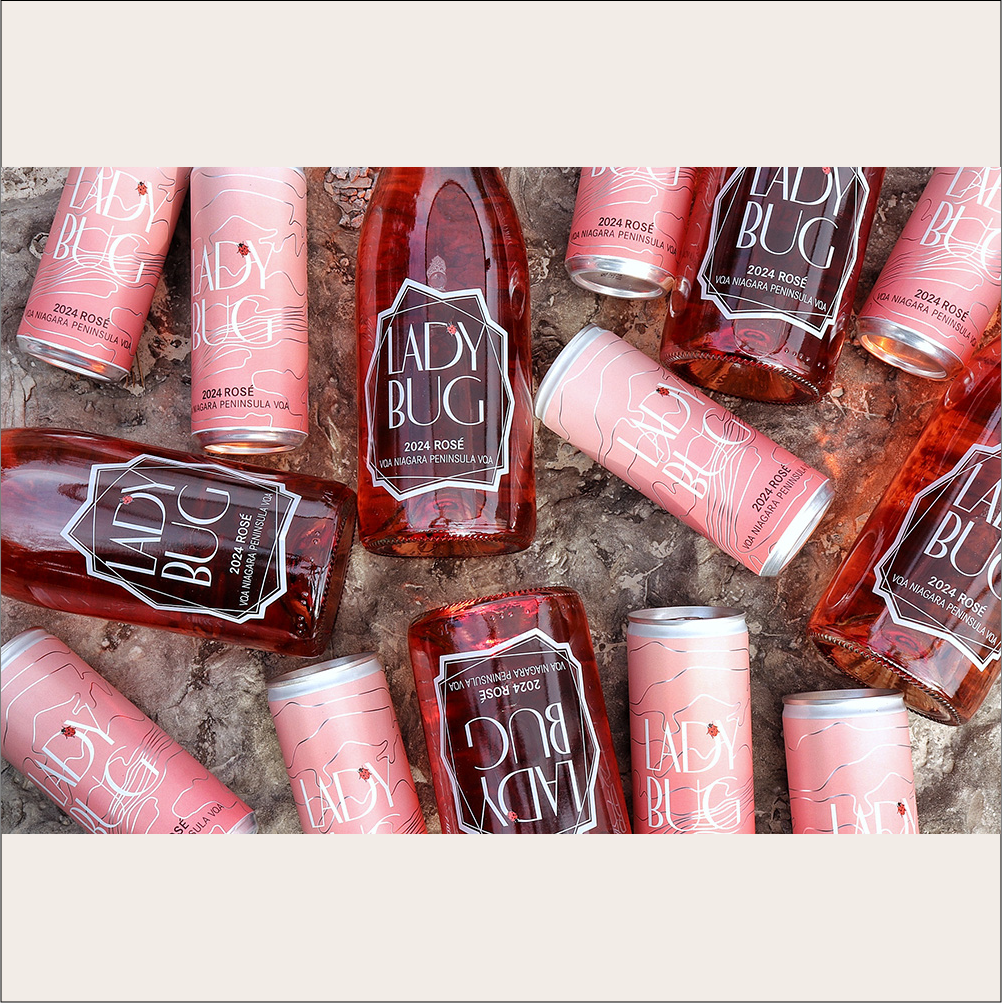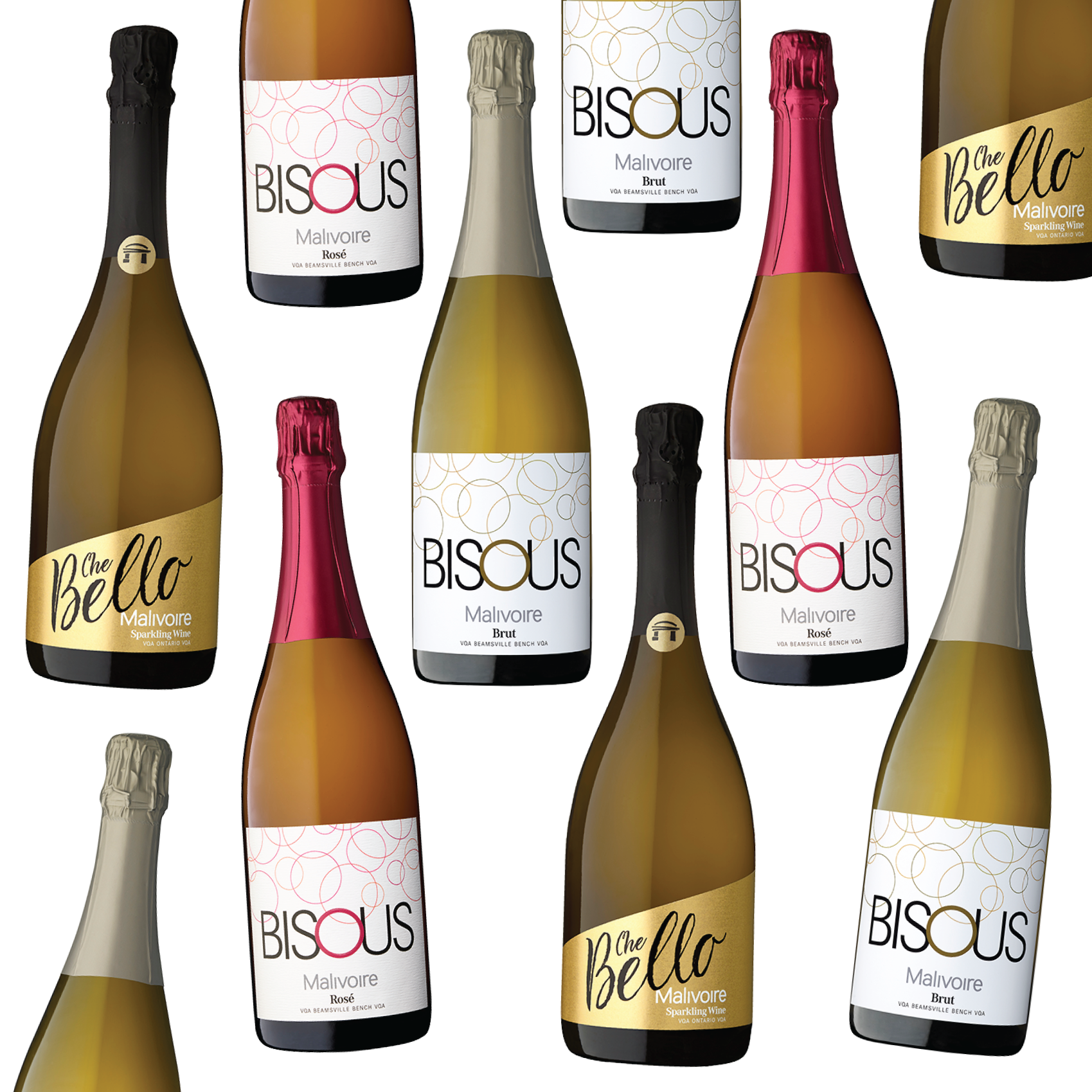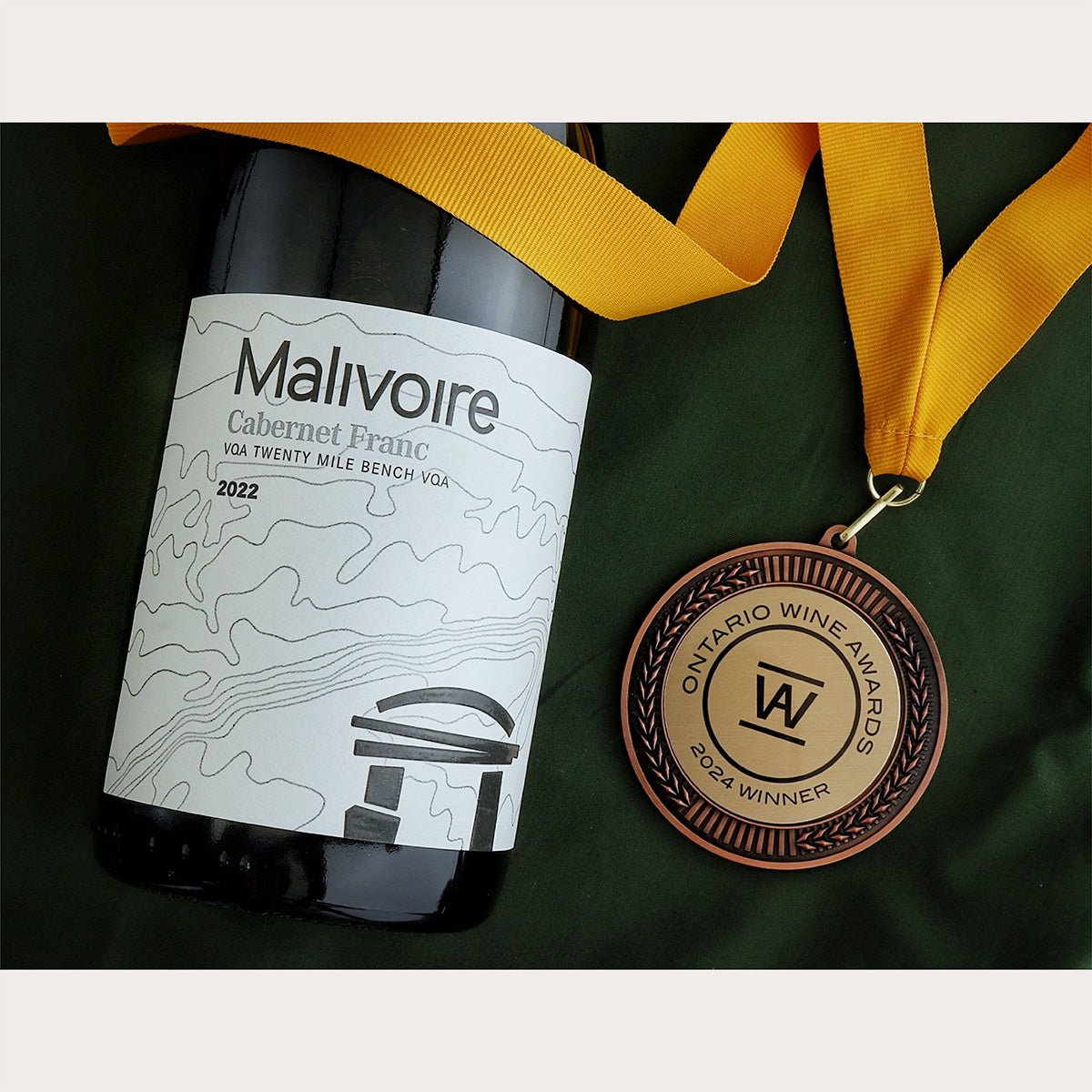Malivoire’s self-made grape: How Cabernet Franc rose through the ranks
At Malivoire Wine’s founding, its business plan named a select group of proven grape varieties upon which the winery’s success would be based. In the almost thirty years since, we have seldom deviated from the original plan.
There have been rare exceptions. Melon comes to mind, a vine planted by result of mistaken identity, that became an instant star in its first harvest. But that’s a story for another time. This story, less glamorous, is about a grape used by early Malivoire in supporting roles that now, after years of reliable proficiency, holds its place among the stars of our portfolio.
The original list of grapes that would form Malivoire’s identity did not include Cabernet Franc. You might have found it beside an asterisk, under “Rosé”. Gamay was the star of the first vintages of Ladybug, with Cabernet Franc as a footnote, added in small amounts to add colour and body.
On the flip side of the wine list, Cab Franc had an uncredited role as a small addition to Old Vines Foch. That diminished after the first few vintages, meanwhile, its contribution to Ladybug had increased to the point that by the early 2000s it had become the lead grape, with Gamay in support.
Our reliance continued to grow; from 2004 we released (to great success) a Cab Franc icewine. We began blending it into a continuing series of Cabernet-Merlot blends and finally, with the 2010 vintage, we added a single-varietal Cabernet Franc to our permanent portfolio.
All the while, we were still growing and harvesting the grape in other peoples’ vineyards. We had no acreage of our own but, with the emergence of Analog (up to 77% you-guessed-it), Cabernet Franc, after years of knocking politely at our door, was banging loudly. In the spring of 2021, we finally began planting the first Malivoire Estate blocks of Cabernet Franc.
Our first harvest from the new vines, this fall, produced 11.5 tonnes. The Malivoire-grown Cabernet Franc this year will be blended with fruit from our neighbours’ vineyards, whose grapes made our Cab Franc wines popular in the first place. Within a few years, we expect 20 tonnes from our own sites. An all-Malivoire Cabernet Franc is not far away.






